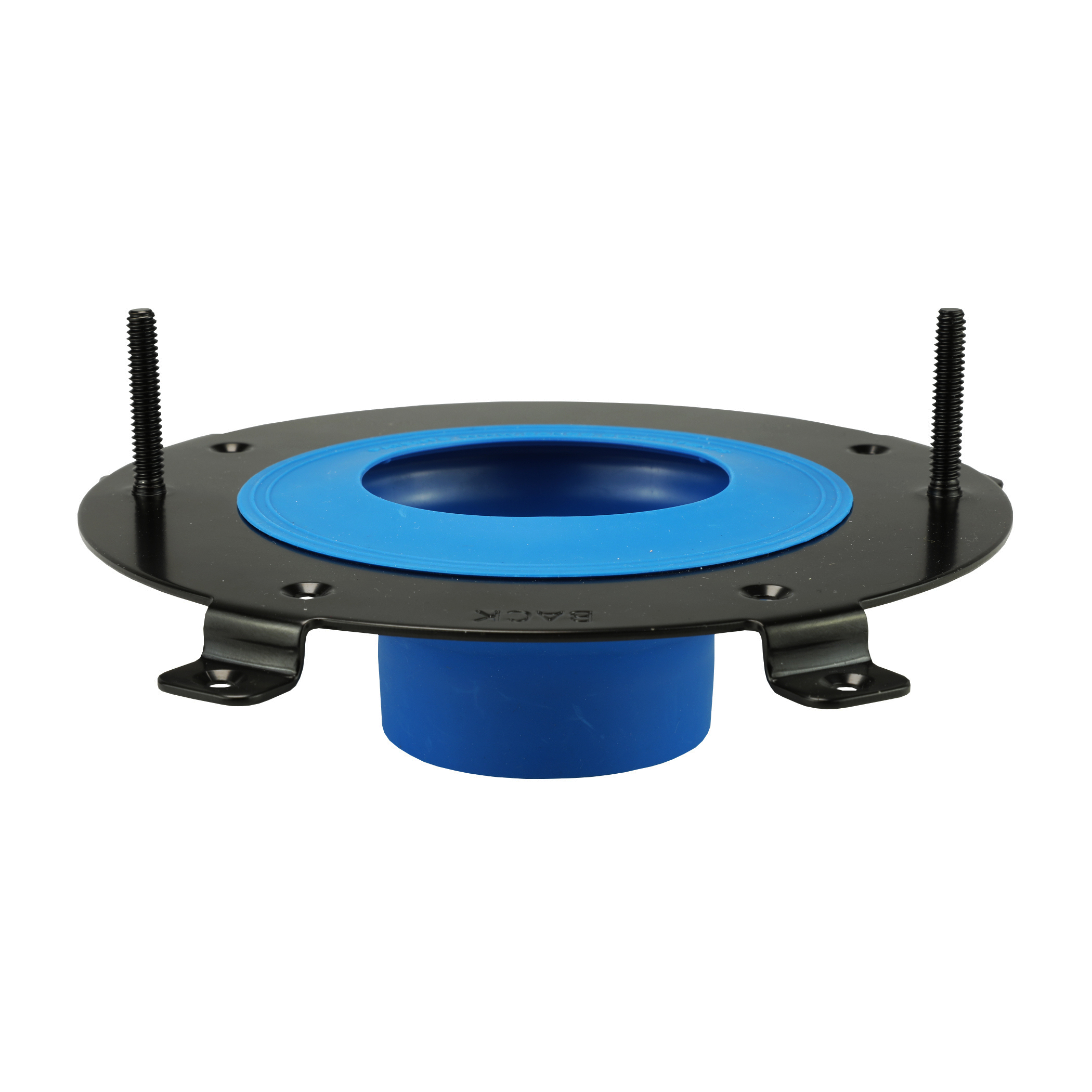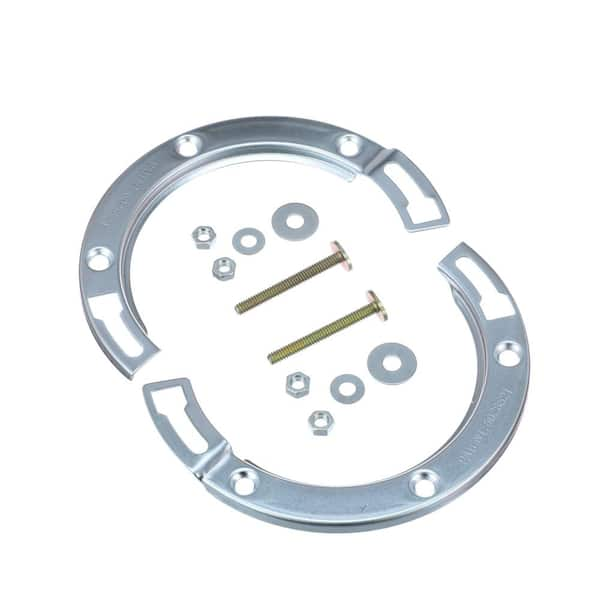They are making a number of good points about Toilet Flange Repair in general in this great article following next.

Intro:
Understanding the Importance of a Toilet Flange:
In the realm of plumbing, the often-overlooked commode flange plays a critical duty in making sure the smooth operation of your shower room fixtures. Acting as an essential port in between your commode and the underlying waste pipe, the commode flange serves as the unsung hero of your plumbing system. Without this durable part, your toilet would certainly be prone to instability and leaks, potentially causing expensive repair services and trouble. Therefore, understanding the significance of a correctly installed and preserved commode flange is critical for any kind of home owner embarking on plumbing tasks or addressing repair work demands.
Why Proper Installation and Maintenance Matter:
Correct setup and precise upkeep of the commode flange are crucial for guarding the stability of your plumbing infrastructure. A meticulously set up flange not just supports your toilet firmly in place but additionally develops an impenetrable seal, warding off the risks of leaks and odours. By welcoming an aggressive technique to flange upkeep, you can minimize the threat of disruptive plumbing problems and maintain the serenity of your home environment. Throughout this insightful guide, we'll decipher the ins and outs of commode flange installation and repair work, encouraging you with the expertise and competence to browse these important tasks expertly.
Best Practices When Installing a Toilet Flange:
Guaranteeing a smooth toilet flange installation requires adherence to a collection of finest practices that ensure sturdiness and functionality. Begin by carefully assessing your devices and products, guaranteeing you have the necessary tools for the job in advance. Selecting the proper flange material, whether PVC, ABS, or cast iron, is critical, as it establishes the longevity and efficiency of your plumbing component. In addition, assessing existing plumbing problems, such as checking for damage or rust, is necessary for preemptively attending to potential complications and ensuring a smooth installation procedure. By adopting these preparatory steps, you established a solid structure for an effective bathroom flange setup, minimising the possibility of future concerns and assisting in lasting upkeep.
Once properly prepared, proceed with the careful elimination of the old flange, complying with a systematic strategy to prevent creating damages to bordering components. Use techniques tailored to deal with stubborn or rusted flanges, ensuring their swift and safe removal without jeopardizing the stability of the bordering plumbing infrastructure. With the old flange eliminated, diligently mount the brand-new substitute flange, choosing one that fits snugly and firmly into location. Appropriately securing the flange to the floor using screws or adhesive is important, as it guarantees security and protects against future leaks. By sticking to these best methods throughout the setup process, you lay the groundwork for a durable and dependable commode flange setup that stands up to the test of time.
Setting Up a New Toilet Flange:
When installing a brand-new bathroom flange, the very first step is to choose the ideal replacement for your plumbing configuration. Take into consideration variables such as the material of the flange, with choices including PVC, ABS, or cast iron. PVC flanges are recognized for their price and resistance to deterioration, making them a prominent selection for DIY enthusiasts. Abdominal flanges use comparable benefits to PVC yet boast added resilience, making them ideal for high-traffic locations or commercial setups. Cast iron flanges, renowned for their strength and longevity, are optimal for installations where longevity is critical. In addition, guarantee that the substitute flange is correctly sized and fits snugly into place to create a water tight seal and prevent leaks.
Securing the Flange to the Floor:
Once you've picked the ideal replacement flange, it's vital to protect it correctly to the flooring to guarantee security and avoid future concerns. Begin by placing and straightening the flange properly over the waste pipe, making certain that it sits flush with the flooring surface area. Depending upon the type of flange and your particular installation preferences, you can secure the flange to the floor making use of screws or glue. If making use of screws, be sure to use corrosion-resistant choices to stop rusting in time. Conversely, adhesive can offer a secure bond between the flange and the floor, ensuring a tough and reliable installment. By complying with these steps and taking the required preventative measures, you can mount a brand-new toilet flange with self-confidence, ensuring a long-lasting and leak-free plumbing fixture.
Best Practices When Repairing a Broken Flange:
Fixing a broken commode flange needs meticulous interest to detail and adherence to finest techniques to make sure a lasting service. Begin by thoroughly assessing the level of the damages and identifying the underlying reason, whether it be corrosion, fractures, or misalignment. This evaluation will guide your repair approach, permitting you to pick one of the most ideal techniques and products for restoring the flange to its ideal problem. In addition, take into consideration the surrounding plumbing infrastructure and floor stability to attend to any prospective contributing variables and protect against future issues from developing. By conducting a comprehensive analysis and evaluation, you lay the groundwork for an effective and enduring repair service procedure that resolves the source of the problem.
With a clear understanding of the flange's condition and the aspects affecting its damages, proceed with the repair service process using precision and treatment. Relying on the severity of the damage, you might opt for repair methods such as epoxy putty, repair flange kits, or partial flange replacements. Make sure that the picked repair service technique effectively resolves the particular problems available while keeping the architectural honesty and capability of the flange. In addition, take aggressive actions to enhance the repaired flange and avoid future damage, such as applying sealant or waterproofing materials to protect against leaks and deterioration. By sticking to these ideal methods throughout the repair service process, you can recover your broken flange to ideal problem, making sure the lasting reliability and performance of your plumbing system.
Kinds Of Toilet Flanges:
Comprehending the different types of toilet flanges is vital for selecting the most suitable alternative for your plumbing needs. PVC, ABS, and cast iron are among the usual materials utilized in toilet flange building and construction, each offering distinct benefits and factors to consider. PVC flanges, recognized for their price and deterioration resistance, are favoured for their ease of setup and toughness. Abdominal muscle flanges, similar to PVC in terms of affordability and ease of installation, are valued for their effectiveness and resistance to impacts. On the other hand, cast iron flanges, renowned for their exceptional toughness and long life, are commonly favored for high-traffic locations or industrial settings where longevity is vital. By familiarising on your own with the attributes of each material, you can make an educated decision when picking a toilet flange that straightens with your particular needs and preferences.
Along with material considerations, commode flanges also are available in numerous design and styles to fit different plumbing configurations and setup preferences. Offset flanges, for example, are created to accommodate bathrooms mounted on floorings that are uneven or where the waste pipe lies off-centre. Likewise, repair flanges, likewise called repair rings or spacer rings, are made use of to deal with problems such as split or damaged flanges without the demand for comprehensive plumbing adjustments. Additionally, flexible flanges supply adaptability ready, allowing for accurate positioning and fit throughout installment. By exploring the diverse variety of commode flange kinds and designs available, you can choose the option that best suits your plumbing setup and installation requirements, ensuring a smooth and trusted service for your bathroom fixtures.
Specialized Options:
In addition to standard toilet flanges, there are specialized choices available to attend to specific plumbing difficulties and setup choices. One such option is the offset flange, which is created to suit toilets installed on floorings that are uneven or where the waste pipe is located off-centre. Balanced out flanges include a special design that allows the toilet to be positioned at a small angle, compensating for irregular floor covering or misaligned plumbing links. This innovative remedy ensures a secure and secure installation, eliminating the need for costly and taxing flooring leveling or pipeline moving. By including a balanced out flange right into your plumbing arrangement, you can get rid of usual setup challenges and attain a professional-quality outcome with ease.
One more specialty alternative worth thinking about is the repair service flange, also known as a fixing ring or spacer ring. Repair flanges are specifically made to address issues such as fractured or broken commode flanges without the demand for considerable plumbing alterations. These flexible elements can be installed straight over the existing flange, giving a durable and reputable base for protecting the bathroom in place. Repair flanges come in numerous sizes and setups to suit different flange sizes and setup needs, making them a practical and affordable service for solving flange-related problems. Whether you're handling a minor flange repair service or a much more intricate plumbing concern, integrating specialized alternatives like balanced out and repair flanges can streamline the installment procedure and make sure long-lasting performance for your washroom fixtures.
Final thought:
To conclude, grasping the art of bathroom flange installation and repair is crucial for preserving a practical and leak-free plumbing system in your house. By recognizing the relevance of a correctly set up flange and adhering to finest techniques throughout the process, you can ensure the long life and reliability of your shower room fixtures. Whether you're choosing the best kind of flange, conducting repairs, or discovering specialty alternatives, attention to information and meticulous execution are vital. Regular maintenance and proactive troubleshooting can aid stop expensive plumbing issues and preserve the tranquility of your house setting. Armed with the understanding and skills gotten from this thorough guide, you can take on commode flange installation and repair work with self-confidence, encouraging you to safeguard your plumbing system for years to come.
How to Replace a Toilet Flange
The toilet flange is the part that keeps your toilet attached to the drain. A broken toilet flange will result in your toilet moving around and can even cause it to leak.
A broken toilet can be such a headache and the leaking water can even cause further damage. Many people don’t know about the different elements of replacing a toilet or fitting a new toilet, and it’s important to know these skills when you’re a homeowner.
This article will walk you through how to quickly and correctly do a toilet flange repair.
How to Replace a Toilet Flange
A toilet flange is a critical element of a toilet, but it serves two separate functions. For instance, a toilet flange secures your toilet unit onto the ground and connects the toilet bowl to the wastewater line.
Often, a toilet flange is already in place when installing a toilet, so many homes have these features but never think of them until they are broken. Therefore, you need to know when to replace a toilet flange.
Remove the Toilet
The first stage is removing the toilet and disconnecting the structure from the water supply. You can close the knob at the back of the toilet and empty the toilet tank several times.
After this, you should remove the water hose from the toilet. It’s essential to cover your bathroom floor with newspaper or a tarp to ensure there’s no external damage to your space.
This can be a complicated process, so getting professional help may be necessary if you don’t feel confident about replacing a toilet flange. When you work with an experienced professional, you can ensure the job is done correctly.
Unscrew Two Nuts and Bolts
The two nuts and bolts are the parts that hold the toilet to the flange and floor, so you need to tackle this part next. You can use an adjustable wrench if the nuts are secure and too tight.
After this, you can set the nuts aside in a container and reattach the toilet when the flange is completely repaired.
Remove the Old Wax
Next, after you’ve removed the toilet and nuts and bolts features, you should remove the old wax that sealed the toilet to the flange. You can quickly eliminate the old wax with a putty knife or other similar tool.
Work your way down the build-up of old wax until you reach the top of the toilet flange.
Remove the Flange
Once you reach the flange structure, you can search for the screws outside the part. All you need to remove the screws is a multi-head screwdriver, allowing you to remove different screws.
You can remove the flange and clean it with disinfectant or a wipe to sanitize the surface area. It’s also a good idea to stuff an old towel or cloth into the space to prevent odors and gasses from oozing from the area.
This is where you need to measure the diameter of the outflow pipe’s mouth to find the identical part to replace the toilet flange. You must have exact measurements when searching for a new flange.
Otherwise, you will buy a new toilet flange that can be used in your bathroom.
You can also take the old toilet flange in a secure bag to your local hardware shop if you want to make a direct comparison with a new product. You must also buy sealing wax for the new toilet flange.
If you need help buying a new toilet flange, a professional plumber can help or an employee at your local store.
Apply New Flange and Fit Toilet
At this point, you can fit the new toilet flange following the instructions given with the product, or you can hire a professional to do the job for you. You should also apply the new seal wax around the mouth.
This will allow the toilet flange to stay in place and not become broken again shortly.
Finally, you can fit the toilet structure back in place by securing the nuts and bolts again. You should reattach the water supply and test the flush to check that the water is running correctly.
To test the water supply, you can flush the toilet several times and wait for the water to fill up and empty repeatedly.
The last step is to tidy the bathroom space and clear away the dirty towels or newspapers. It’s a good idea to clean the floors with a strong disinfectant to eliminate the odors left behind.
With experience, you can fix the toilet flange in no time. But, if you’ve never handled these toilet parts, you should hire a professional plumber to take care of them.
Thankfully, our team is here for you. We have the best plumbers in Detroit to help you fix any toilet issues you encounter at home.
https://waterworkplumbing.com/how-to-replace-a-toilet-flange/

I'm just very focused on How to Repair a Toilet Flange and I am praying you appreciated the new piece. Sharing is caring. Helping others is fun. I am grateful for being here. Return soon.
Schedule An Appointment
 Jennifer Grey Then & Now!
Jennifer Grey Then & Now! Tony Danza Then & Now!
Tony Danza Then & Now! Destiny’s Child Then & Now!
Destiny’s Child Then & Now! Erika Eleniak Then & Now!
Erika Eleniak Then & Now! Megyn Kelly Then & Now!
Megyn Kelly Then & Now!